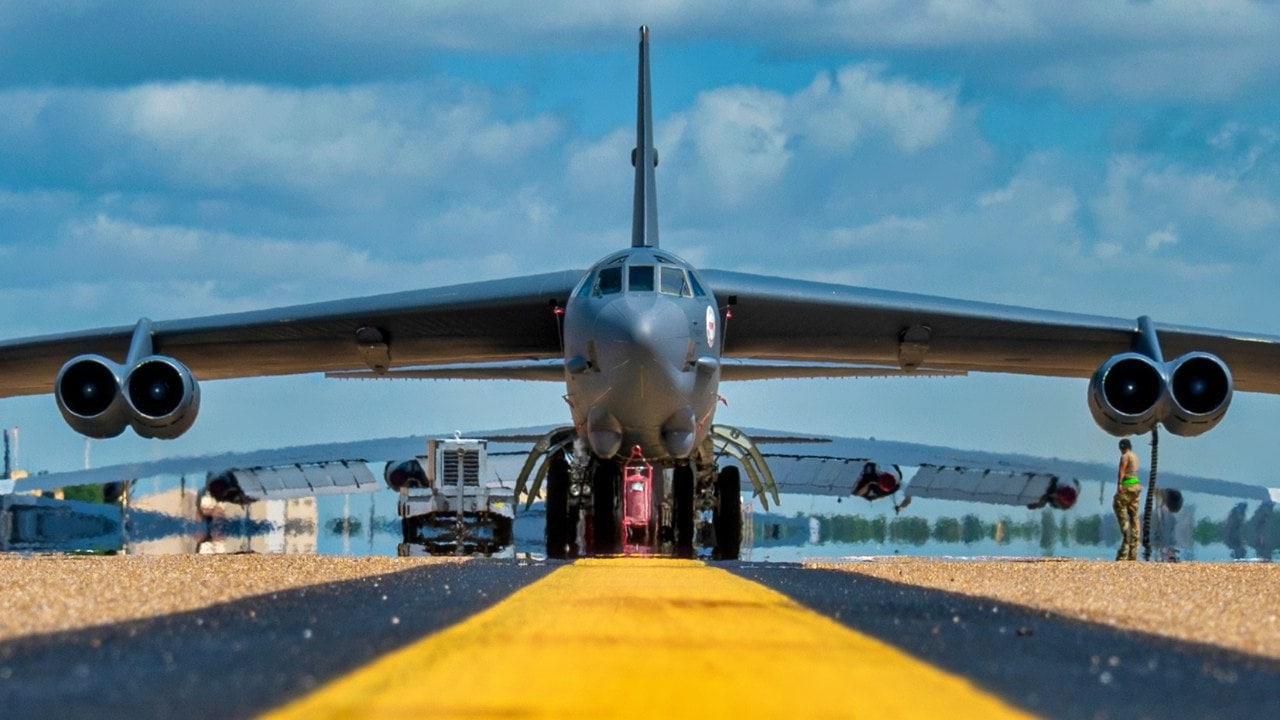Article Summary: In a show of force, U.S. Air Force B-52 bombers recently conducted flyovers across the Middle East, signaling deterrence to Iran amid rising nuclear tensions. Departing from the U.K.’s RAF Fairford, the bombers executed patrols over allied nations, showcasing interoperability with regional partners.
Key Point #1 – The flights coincide with Iran’s ongoing uranium enrichment efforts, which the IAEA warns could soon reach near-weapons-grade levels. While the Trump administration remains ambiguous on its Middle East strategy, U.S. officials stress “maximum pressure” on Tehran.
Key Point #2 – Future bomber task force missions, potentially involving B-2 stealth bombers, may continue as Washington and Israel seek to counter Iran’s nuclear ambitions.
U.S. B-52 Bombers Send a Clear Warning to Iran
In the last few days, a pair of B-52s conducted two regional flyovers from Europe toward the Middle East. The Stratofortresses flew over several allied countries, displaying their great range and ability to project power in the Central Command area of operations.
The B-52s were deployed to show friends and foes alike—Iran in particular—that they can operate anywhere at any time.
The Air Force calls these patrols “bomber task force missions,” and the B-52s were accompanied by fighter jets from a partner country.
The service branch noted that the B-52s are able to fly with the cooperation and interoperability of different allied nations when conducting these missions.
The B-52s travelled from an air base in Fairford, United Kingdom, and flew across six partner countries, a Central Command news release said.
Another Task Force Mission
A mission on Feb. 17 was more extensive. “Two B-52s from RAF Fairford, U.K., flew across Europe and through nine partner nations in CENTCOM’s area of responsibility during their mission, which included aerial refueling and live munitions drops at ranges in several partner nations,” Central Command announced. “Additionally, U.S. F-15s and four partner nations provided fighter escorts for the bombers throughout the mission.”
The Trump administration has been coy about its security strategy in the Middle East. The president has talked about bringing troops home from anti-terror duties in Syria. He has discussed preventing the Iranians from developing a nuclear device and wants to apply “maximum pressure” to limit their nuclear infrastructure.
Trump has always been a steadfast supporter of Israel’s right to protect itself and has given implied permission to Israeli Prime Minister Benjamin Netanyahu to go after Iranian nuclear sites.
The Israelis conducted a limited strike against Iran last fall, deploying F-35I Adir and F-16I Soufa fighter jets. The warplanes used precision-guided munitions and ground-strike missiles to eliminate Iranian air-defense and radar installations. No Israeli jets were lost during the mission.
Israel does not have a bomber force of its own, so Netanyahu likely chuckled to himself when he found out the American B-52s flew near Iran with no resistance.
The U.S. Air Force has the bunker-busting bombs needed to damage Iranian underground nuclear infrastructure, should the Israelis choose to deliver a more robust attack against Iran.
Israel has used bunker busters in Lebanon before, and Netanyahu has told Trump he is willing to “finish the job,” likely referring to the potential of striking Tehran’s nuclear facilities.
More Iranian Enriched Uranium
Meanwhile, the Iranians continue to enrich uranium near the standard needed to create a nuclear weapon. The International Atomic Energy Agency said Iran is progressing toward stockpiling 250 kilograms of near-weapons-grade uranium by March.
U.S. National Security Adviser Mike Waltz provided a warning: “If Iranian leaders seek sanctions relief, they should give up their entire [nuclear enrichment] program and “not play games as we’ve seen Iran do in the past,” Waltz told Fox News.
B-52 Flights May Start Again
The Americans may continue to use B-52s, and perhaps B-2 stealth bombers, to harass Iran. Central Command has kept announcements of the last two B-52 missions understated. There was no blustery talk from the U.S. military about the most recent B-52 flights.
Secretary of Defense Pete Hegseth is still developing a national-security strategy for the region, and he may not be happy with his current Chairman of the Joint Chiefs of Staff, General C.Q. Brown.
Another chairman could be more hawkish against Iran and convince the president and his defense secretary to make Central Command a priority, even though there are pressing issues elsewhere. Look for more of these shows of strength from the B-52s, as the United States and Israel look to prevent the Iranians from building a nuclear weapon.
B-52 Bomber Photo Essay
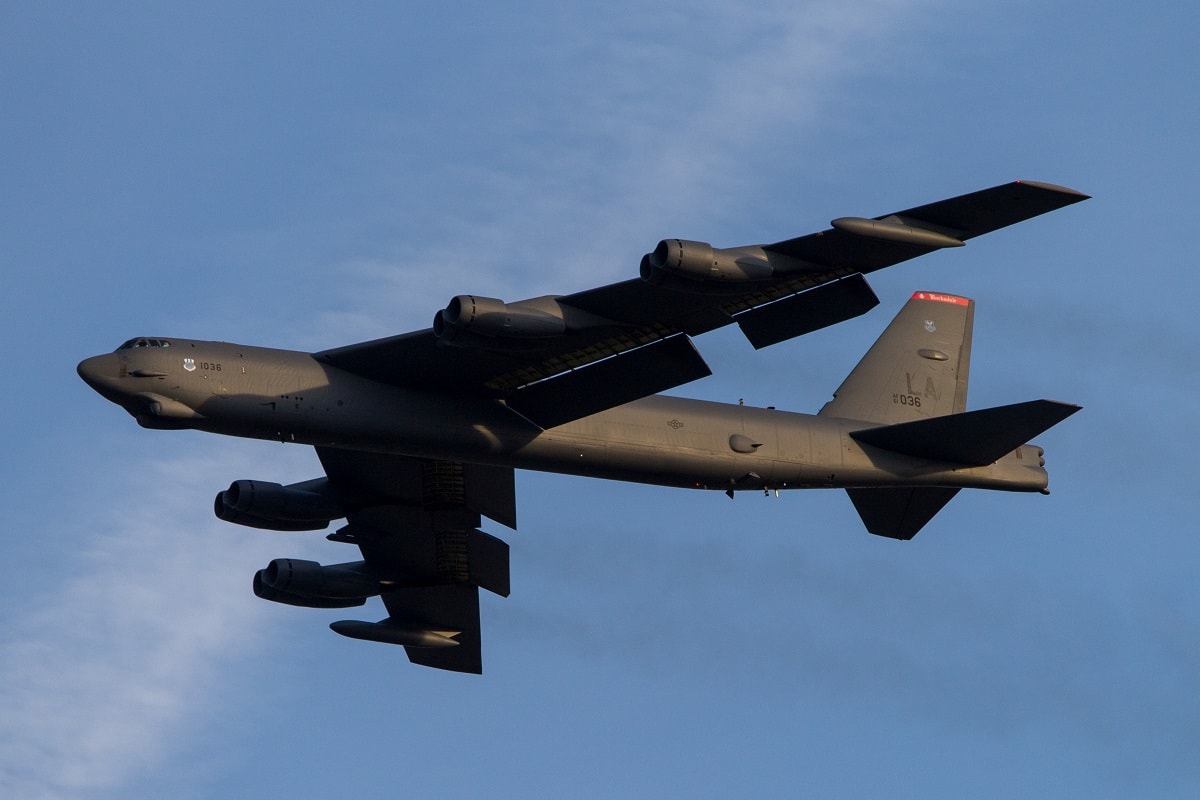
A B-52H-175-BW(61-0036) Stratofortress taking off from Tinker AFB, OK.
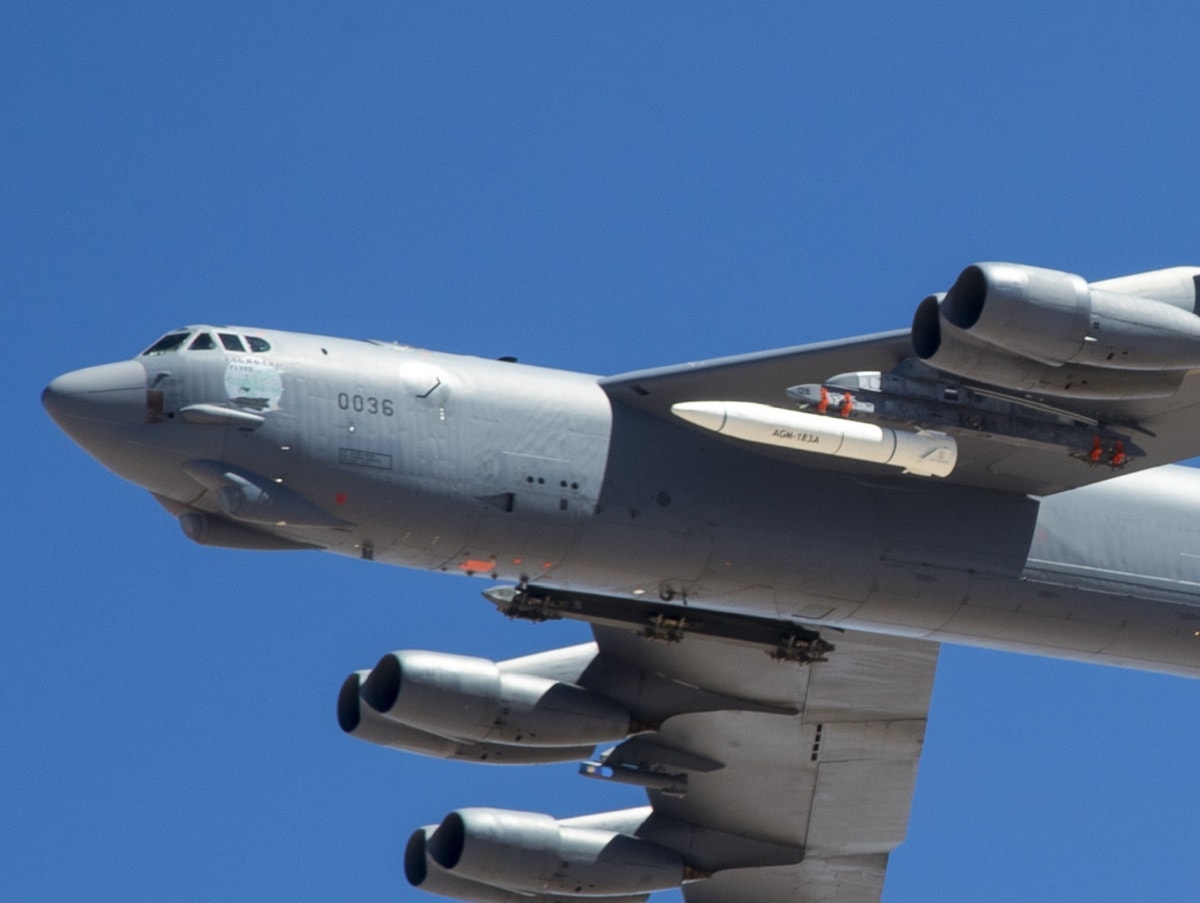
EDWARDS AIR FORCE BASE, Calif. (June 12, 2019) B-52 out of EDW carries ARRW IMV asset for its first captive carry flight over Edwards Air Force Base. (U.S. Air Force photo by Christopher Okula)
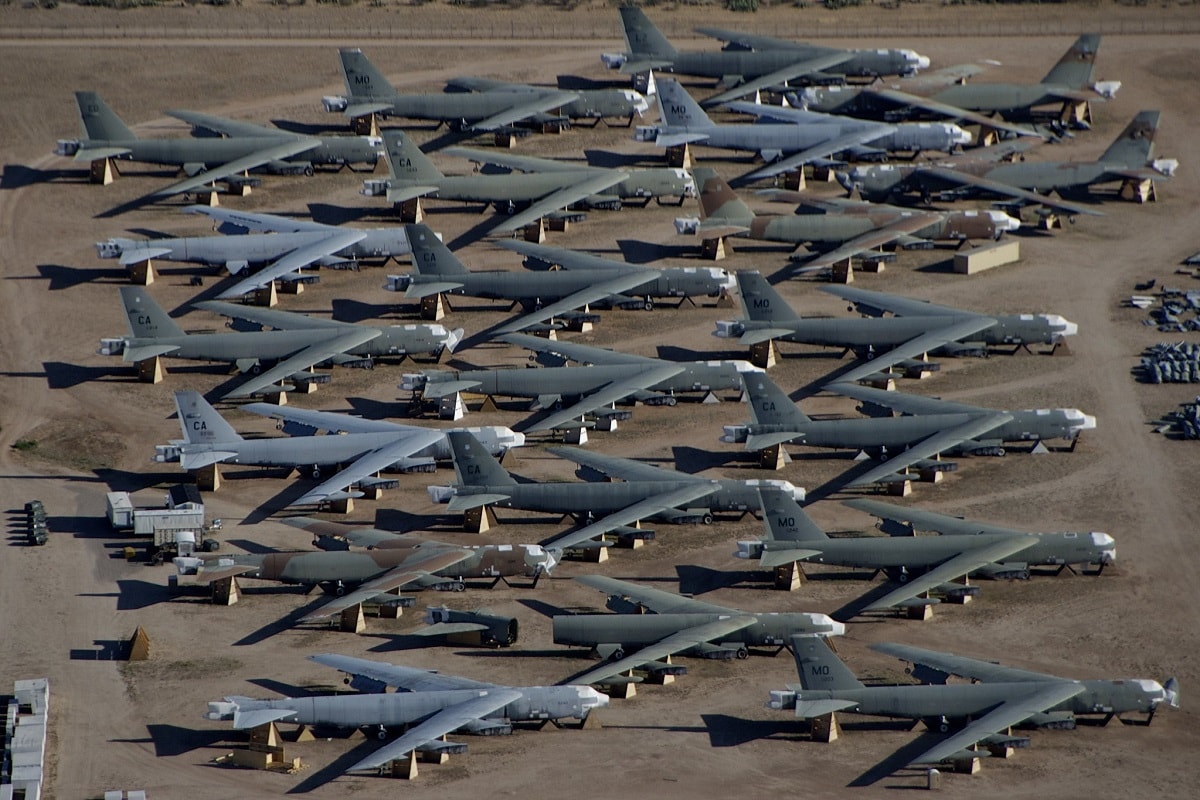
B-52 Bomber. Image: Creative Commons.

A U.S. Air Force Boeing B-52H Stratofortress of the 2d Bomb Wing static display with weapons, at Barksdale Air Force Base, Louisiana (USA), in 2006.
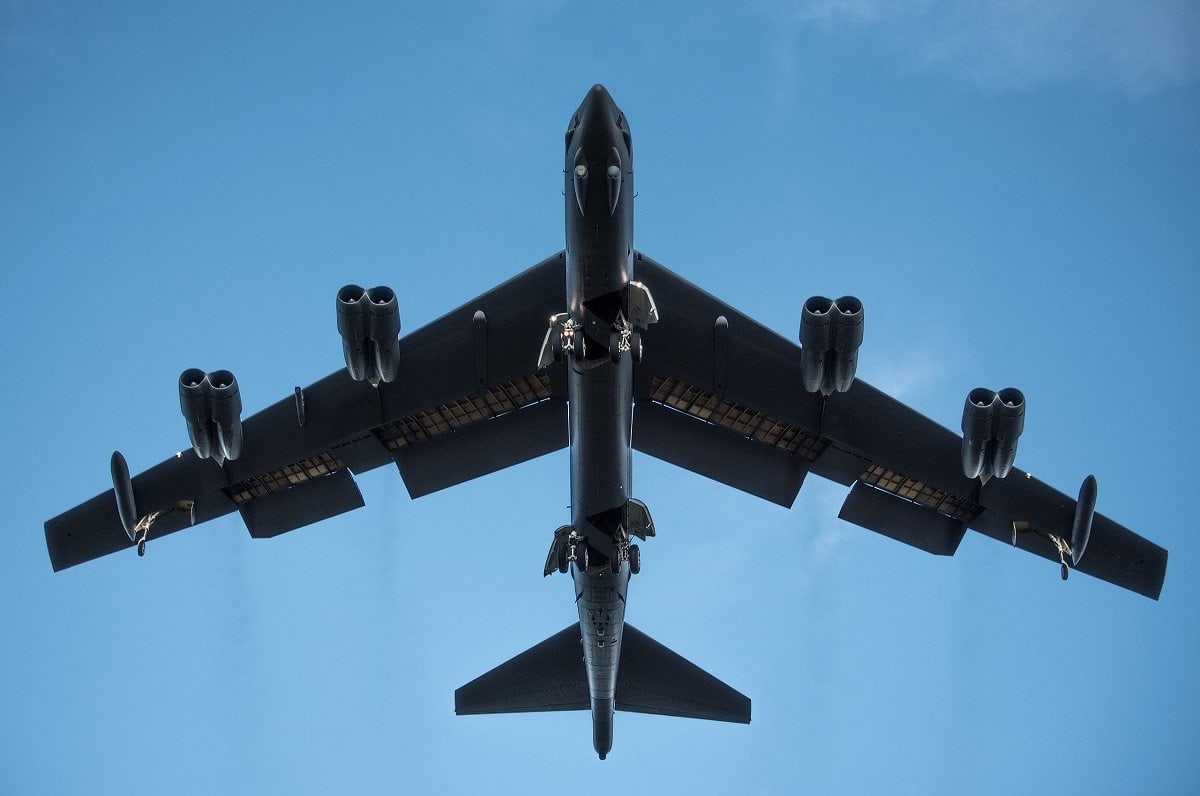
A U.S. Air Force B-52H Stratofortress, assigned to the 20th Expeditionary Bomb Squadron, deployed from Barksdale Air Force Base, La., approaches the flightline at Royal Australian Air Force Base Darwin, Australia, April 6, 2018. Two U.S. Air Force bombers visited the base in Australia’s Northern Territory to support the U.S. Pacific Command’s Enhanced Air Cooperation initiative in cooperation with RAAF joint terminal attack controller teams. The EAC comprises a range of air exercises and training activities designed to enhance regional cooperation, coordination and interoperability between Australian and U.S. service members.
About the Author: Dr. Brent M. Eastwood
Brent M. Eastwood, PhD is the author of Don’t Turn Your Back On the World: a Conservative Foreign Policy and Humans, Machines, and Data: Future Trends in Warfare plus two other books. Brent was the founder and CEO of a tech firm that predicted world events using artificial intelligence. He served as a legislative fellow for U.S. Senator Tim Scott and advised the senator on defense and foreign policy issues. He has taught at American University, George Washington University, and George Mason University. Brent is a former U.S. Army Infantry officer. He can be followed on X @BMEastwood.

